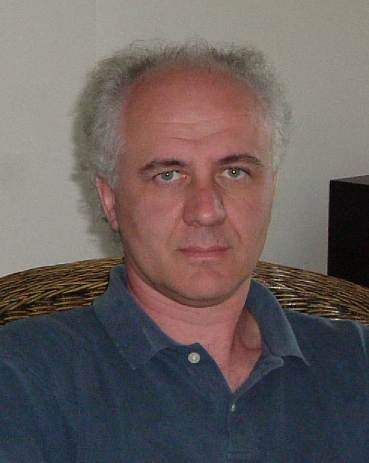
Antonio Fiorenzo Peverali
Istituto di Genetica Molecolare “Luigi Luca Cavalli-Sforza”
Via Abbiategrasso, 207 – 27100 PAVIA
tel: +39 0382 546345
fax: +39 0382 546370
E-mail: peverali@igm.cnr.it
Pubblicazioni Recenti

Antonio Fiorenzo Peverali
Istituto di Genetica Molecolare “Luigi Luca Cavalli-Sforza”
Via Abbiategrasso, 207 – 27100 PAVIA
tel: +39 0382 546345
fax: +39 0382 546370
E-mail: peverali@igm.cnr.it
Pubblicazioni Recenti
Spiacente nessuna pubblicazione corrispondente ai criteri di ricerca
This site uses cookies. By continuing to browse the site, you are agreeing to our use of cookies.
OKLearn morePotremmo richiedere che i cookie siano attivi sul tuo dispositivo. Utilizziamo i cookie per farci sapere quando visitate i nostri siti web, come interagite con noi, per arricchire la vostra esperienza utente e per personalizzare il vostro rapporto con il nostro sito web.
Clicca sulle diverse rubriche delle categorie per saperne di più. Puoi anche modificare alcune delle tue preferenze. Tieni presente che il blocco di alcuni tipi di cookie potrebbe influire sulla tua esperienza sui nostri siti Web e sui servizi che siamo in grado di offrire.
Questi cookie sono strettamente necessari per fornirvi i servizi disponibili attraverso il nostro sito web e per utilizzare alcune delle sue caratteristiche.
Poiché questi cookie sono strettamente necessari per fornire il sito web, rifiutarli avrà un impatto come il nostro sito funziona. È sempre possibile bloccare o eliminare i cookie cambiando le impostazioni del browser e bloccando forzatamente tutti i cookie di questo sito. Ma questo ti chiederà sempre di accettare/rifiutare i cookie quando rivisiti il nostro sito.
Rispettiamo pienamente se si desidera rifiutare i cookie, ma per evitare di chiedervi gentilmente più e più volte di permettere di memorizzare i cookie per questo. L’utente è libero di rinunciare in qualsiasi momento o optare per altri cookie per ottenere un’esperienza migliore. Se rifiuti i cookie, rimuoveremo tutti i cookie impostati nel nostro dominio.
Vi forniamo un elenco dei cookie memorizzati sul vostro computer nel nostro dominio in modo che possiate controllare cosa abbiamo memorizzato. Per motivi di sicurezza non siamo in grado di mostrare o modificare i cookie di altri domini. Puoi controllarli nelle impostazioni di sicurezza del tuo browser.
Utilizziamo anche diversi servizi esterni come Google Webfonts, Google Maps e fornitori esterni di video. Poiché questi fornitori possono raccogliere dati personali come il tuo indirizzo IP, ti permettiamo di bloccarli qui. Si prega di notare che questo potrebbe ridurre notevolmente la funzionalità e l’aspetto del nostro sito. Le modifiche avranno effetto una volta ricaricata la pagina.
Google Fonts:
Impostazioni Google di Enfold:
Cerca impostazioni:
Vimeo and Youtube video embeds:
